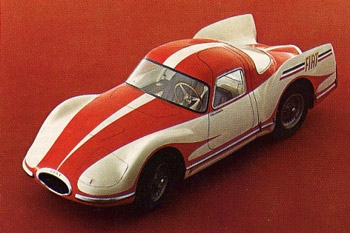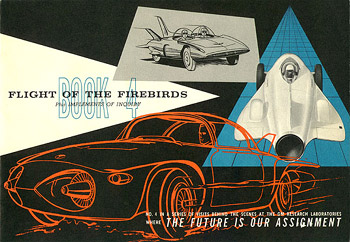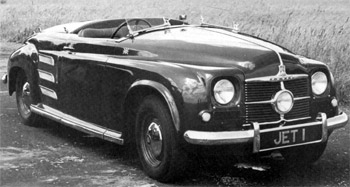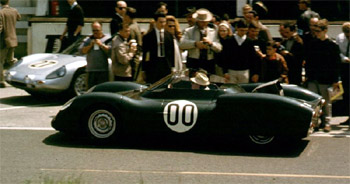|
Coinciding with the annual Le Bourget Paris Airshow, Project 1221 reveal an exclusive insight into the fundamental feature of the MF1 supercar, and future projects.
Ever since the outset of Project 1221 news releases, critics, subdued by the standardized approach taken by the majority of manufacturers, have dismissed the unparalleled attributes assigned to the MF1.
Failing to step outside the boundaries of conventional technological applications, claims such as ‘reliability’ and a ‘five-digit powerband’ have clashed, portraying a seemingly impossible combination.
When the words ‘Gas Turbine’ come into play, the far fetched fantasy is transformed into a viable revolution, representing a world first for a production car. The use of gas turbines for cars is not a completely new concept, however, with the basic idea dating back to before the Second World War.
Gas Turbine basics
Gas turbines use a pressurized gas to spin a turbine, which is produced by the combustion of a fuel such as kerosene, or natural gas. The heat from the combustion expands air, resulting in a high velocity gas flow, which in turn is used to spin a turbine.
Gas turbines hold a variety of advantages over conventional reciprocating internal combustion engines, with very high power-to-weight ratios, as a result of relatively small dimensions. The need for maintenance is also considerably reduced, partly due to the fact that there are typically 80 percent less parts than in a conventional car engine. Further benefits include the availability of instant heat, and vibration free operation, which allow for improved luxury. Oil consumption is almost non existent, and engine life-expectancy is very long.
Early Gas Turbine development
In Europe, Rover was the leader of gas turbine engine development, approached by the government in 1939 to develop Frank Whittle’s basic design to a production ready state. At the time, the application of the design focused on aircraft, with a high possibility that Rover would eventually produce gas turbine engines for the RAF.
The project was highly confidential, referred to internally as design work for a supercharger. Although Whittle’s company was supposed to conduct the design work of the engine, Rover soon took charge, making serious adaptations to the basic concept. Whittle was soon left out of the project, with the ministry giving Rover the go-ahead to take on a completely new design. Rover were unsure whether to remain in the aero engine business, and eventually exchanged their leading gas turbine designs for the 700 bhp Rolls Royce Meteor engine, a modified V12 Spitfire engine for use in tanks.
Shortly after the war, Rover considered the prospect of using gas turbines to power cars, resulting in a long string of prototypes, including the 1950 Jet 1, 1952 T2, 1956 T3, and 1961 T4. Later on, the technology was also applied to commercial vehicles, with the Leyland gas turbine prototypes. In the 1950’s and 60’s, there were many other manufacturers experimenting with the concept, including Chrysler, GM, and even Fiat.
  |
In 1954, Fiat presented the 'Turbina', six years after the project
had commenced in 1948. Power was delivered through the rear wheels. GM were also active in the development of gas turbine cars, leading to the well known Firebird I, II and III, from 1952, 1956 and 1958 respectively.
|
|
|
  |
|
The 1950 Rover Jet 1 was
highly revolutionary for its time, featuring a gas turbine engine, which powered all four wheels through a second turbine system. The 1963 Rover BRM Le Mans race car, also featured a gas turbine engine. |
|
|
Race Car Gas Turbine Applications
Various race car projects also used gas turbine engines, including the 1963 Rover BRM, which drove in the 1963 and 1965 Le Mans 24 Hour races, although not entering as a competitor. There was also the Howmet TX Turbine, engineered by Ray Heppenstall, of which three examples were built in 1967 and 1968.
The 1967 Indianapolis 500 saw the team Granatelli STP-Paxton turbine car, using a 550bhp Pratt & Whitney gas turbine engine, mated to a Ferguson four-wheel drive system. On its inaugural Indy 500 race in 1967, the STP Paxton turbine car led the pack for 171 laps in the hands of Parnelli Jones. Frustratingly for the team, the car coasted to a stop on lap 196 of 200 when a bearing in the gear casing failed.
Lotus worked with Granatelli to develop the four-wheel drive gas turbine Lotus 56 Formula one car. Four cars were entered in 1968, but failed to succeed due to crashes and mechanical problems, although these were not related to the gas turbine powertrain.
MF1, unrivalled features
In similar fashion to the first Rover prototype and the Granetelli developed cars, the MF1 uses a four-wheel-drive transmission system. The mid-mounted gas turbine is located low down, resulting in a low centre of gravity, whilst allowing for a relatively large luggage area at the rear. This is supplemented by an additional area at the front.
The smooth running, reliable gas turbine engine provides effortless performance, singularly delivered in outstanding comfort and safety. A key benefit of the gas turbine is in the wide range of use, offering instant exhilaration, as well as a reliable and soothing daily means of urban transportation. With a high power, yet low weight engine as a basis, engineers have had the luxury of being able to add additional features to the car, such as armor plating.
The Le Bourget airshow serves as an appropriate venue for the presentation of the gas turbine concept, with Project 1221's strategic partner being a key player in the aeronautic industry. It is expected that Project 1221 will use similar gas turbine technology for future projects, including boats and aircraft.
By Patrick Granger
Website:

|
|
|
|
![]()
![]()